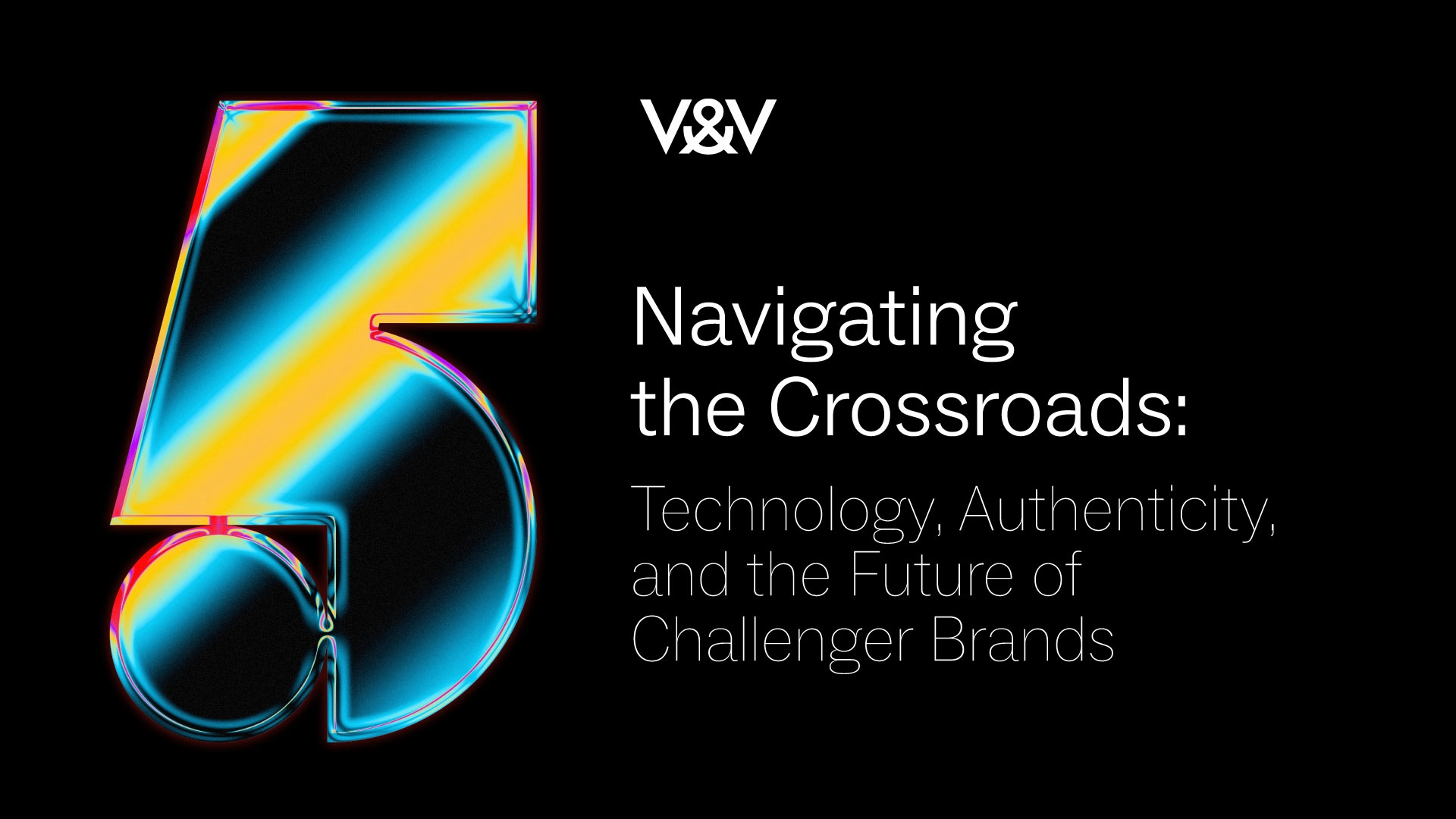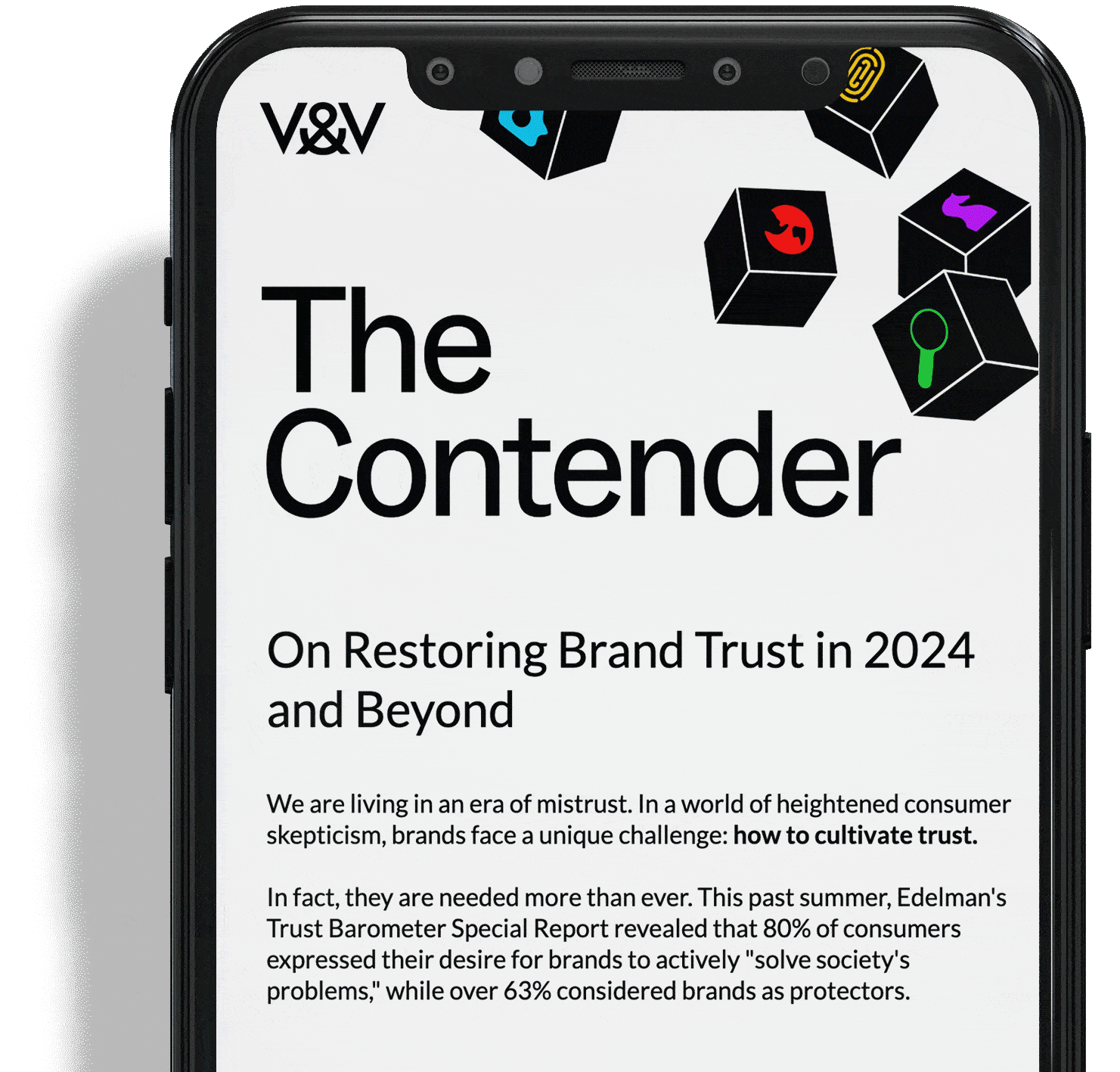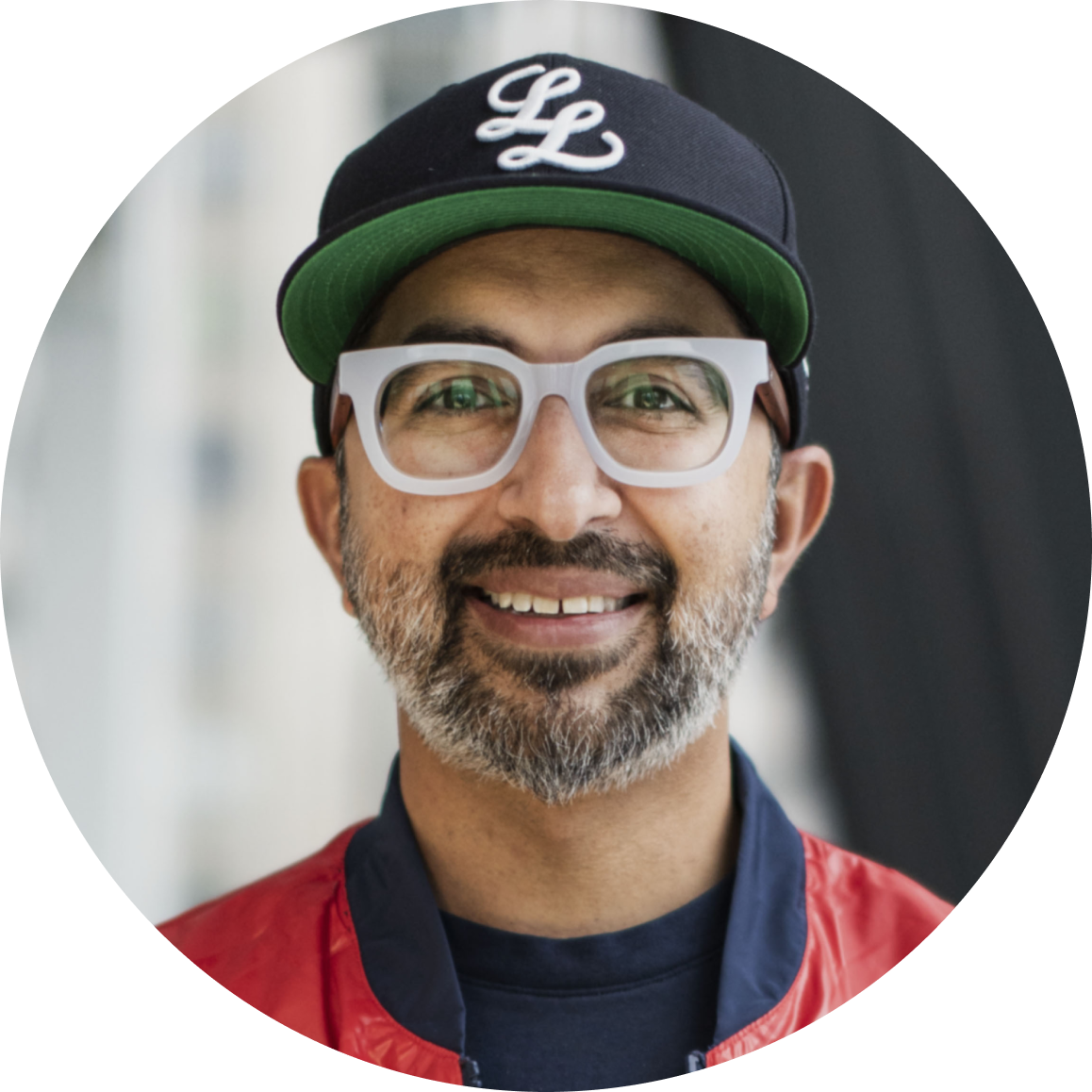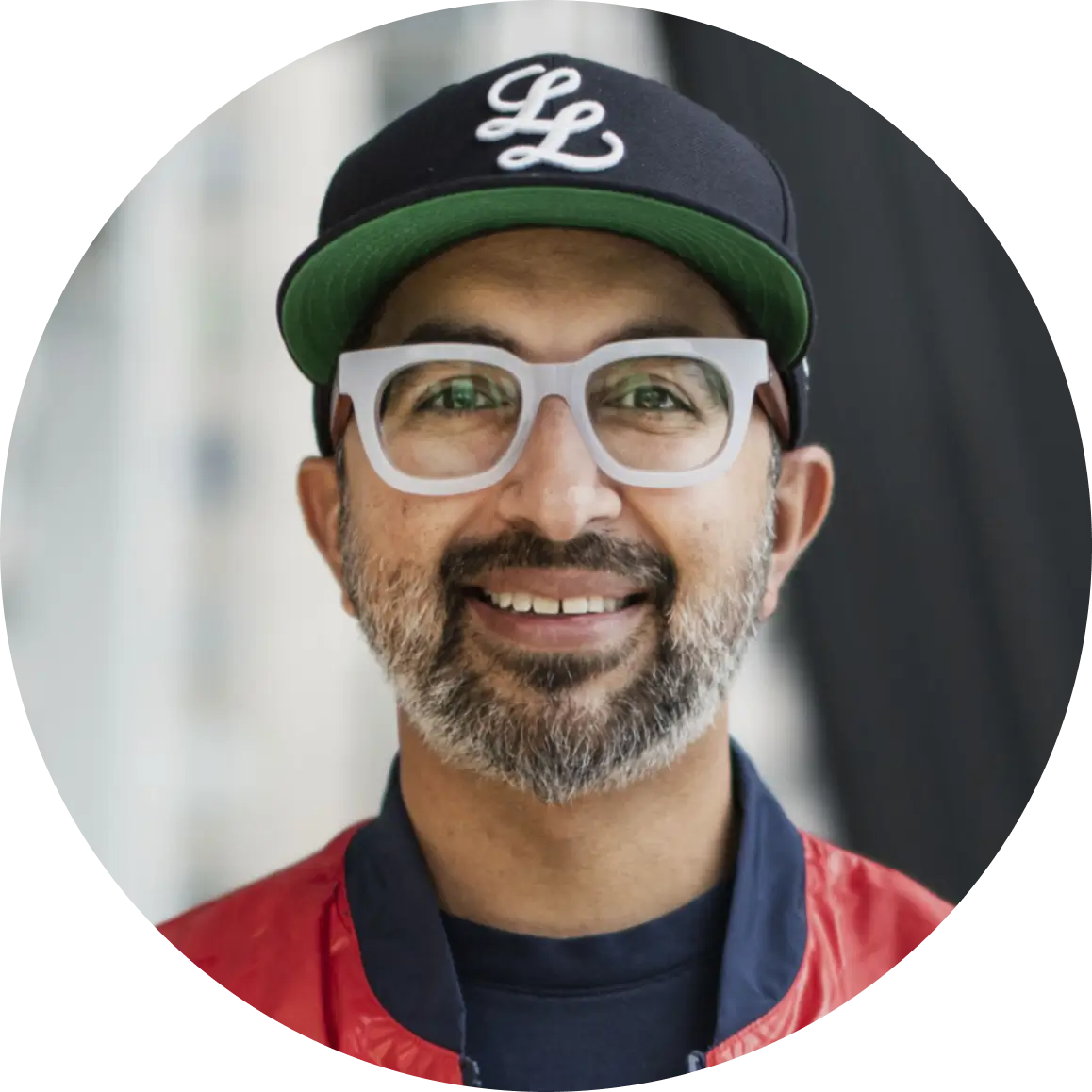This year, we saw two opposing ideas converge in a very real way: technology and innovation VS authenticity and mindfulness. On the one hand, the world is thrilled about the advancements in AI and large language models, which are driving progress in healthcare (e.g. diagnostics and drug recovery) and finance (e.g. more precise trading decisions). On the other hand, Merriam-Webster Inc. selected “authentic” as its word of the year to highlight how the rise of AI and misinformation on platforms like Elon Musk’s X have made it more difficult to differentiate between what’s real and what’s fake.
As we close the books on another year, we’re looking back at key observations from 2023 and leaving you with thought-provoking questions to guide your strategic thinking as we embark on 2024. Like brand New Year’s resolutions, if you would.
These observations are informed by the strategies we’ve built for the world’s most exciting Challenger Brands, like Pura, Pixie Mood, Assembly, Multy Home, Crumps’ Naturals, and more.
Now, let’s get into it.
1. AI Unleashed: As AI overtakes traditional search revenue, will responses become sponsored?
In late 2022, the emergence of large language models like ChatGPT and Google’s Bard marked a pivotal moment in digital interaction. 2023 truly became the year to witness these models’ influence in action, boasting impressive numbers:
- ChatGPT has garnered over 100 million weekly active users.
- More than 92% of Fortune 500 companies are utilizing ChatGPT.
- OpenAI, the creator of ChatGPT, is reported to have a valuation of $29 billion.
These developments indicate a shift in the digital landscape. Search engines, once the undisputed gatekeepers of online information, are finding their position increasingly rivalled by AI-driven platforms. Although search remains a strong touchpoint in terms of brand impact – rising to the fifth strongest touchpoint from eleventh in 2018 – the rise in AI suggests a future where users may turn to tools like ChatGPT before traditional search engines like Google.
This shift hasn’t gone unnoticed by industry giants. A report from The New York Times highlighted Google executives’ growing concerns about maintaining relevance in the rapidly evolving digital landscape. This led to the launch of Bard in March 2023, a direct response to the rising prominence of AI in search and information dissemination.
In the year to come, people will continue to explore beyond the traditional search bar meaning that brands will need to reimagine their digital strategies. Although accessing the most current information via ChatGPT 4.0 currently requires a subscription, it’s only a matter of time before real-time updates become a standard feature on large language models.
Questions & Considerations Leading into 2024:
- How will the shift from search’s meritocratic response model to ChatGPT’s singular answer approach affect the strategies brands and marketers use to gain visibility?
- Who should regulate AI-generated responses’ accuracy, relevance, and bias, especially if they begin to include branded content?
- In a landscape where ChatGPT and similar AI tools are becoming primary information sources, how must content strategies evolve to remain effective?
2. The Authenticity Crisis: How do you engage when no one is watching?
In an age of post-truth and deep fakes that blur the lines of fiction and reality, is it any surprise that Merriam-Webster’s word of the year for 2023 is “authentic”? Simple questions, such as whether a student wrote their own paper or if the Pope really wore a white Balenciaga puffer, are now met with doubt. Nothing seems straightforward anymore.
This growing distrust is mirrored in public sentiment towards AI. A Pew Research Center survey reveals that people are more concerned than excited about the increased use of AI in daily life, rising from 37% in 2022 to 52% in 2023.
In 2024, we anticipate that the quest for authenticity will continue and extend beyond the realm of technology. However, before your business or brand decides to jump on the “authenticity” bandwagon like everyone else, they should understand that being authentic requires a genuine effort and can’t be just for show.
One way brands can tap into authenticity in 2024 is to participate in real-time conversations with users on platforms like Reddit or TikTok. Stanley, the drinkware and gear brand that makes the viral steel tumblers, is a prime example of this approach. In a viral video posted earlier this month, a customer posted a video of her car burned to a crisp with a Stanley drink cup still in impeccable condition. That video got the attention of Stanley’s president, who replied via TikTok and offered the customer a new car.
While this response might seem extraordinary, it does capture the essence of authenticity that modern brands strive for. Stanley’s reaction wasn’t just about addressing a customer’s experience; it was an unscripted, spontaneous act demonstrating the brand’s commitment to its community.
That being said, it is important for brands to understand that genuine authenticity also goes beyond public image. While the Stanley story is a great example, the brands that will ultimately win are those that are authentic in their decision-making and private interactions with their audiences.
In other words, brands should engage authentically, regardless of who is watching.
Questions & Considerations Leading into 2024:
- In an era where authenticity is highly prized and coveted, what indicators should we use to assess the genuineness of brands?
- How can we design brand experiences that genuinely connect with our customers without appearing insincere or staged?
- How can we build a brand that motivates customers to promote it voluntarily, driven by pride instead of obligation?
3. The Provenance Predicament: feeding the world, starving the planet
In a world increasingly conscious of sustainability, the allure of products like San Marzano tomatoes, Champagne, and Caviar, deeply rooted in their native terroirs, face a new challenge: scaling to meet global demand without sacrificing the environment. However, current production practices often deplete resources and harm ecosystems.
Consumers are looking at brands closely to do something about the provenance predicament, as echoed by the Edelman Trust Barometer, which reveals a growing trust in businesses over governments to take the lead on issues like climate change.
Survey findings like IBM’s latest report found that 54% of consumers polled are willing to change their purchasing habits to reduce environmental damage, demonstrating that today’s consumers are not only keeping a close eye on brands’ sustainability efforts but also willing to pay extra to support sustainable practices.
We also saw that consumers respond more positively to brands that back sustainability and transparently demonstrate it – like clothing brand ASKET’s impact receipt, which breaks down every order’s environmental cost and impact.
As more and more businesses adopt transparent and sustainable practices, we’re seeing different industries raise their standards for competitors in their verticals. One example is the champagne industry, where sustainability has become a significant focus, as described in a Vogue article fittingly titled, “Can bubbly ever be sustainable?”
In its feature, Vogue highlights Telmont, the 111-year-old house that has committed to becoming the first climate-positive champagne house by 2030. Their approach includes transitioning to 100% organic agriculture, ditching gift boxes and excessive packaging, opting for green bottles made from 85% recycled glass and shifting from air to less carbon-intensive sea and road transport. This commitment, backed by notable investors like Leonardo DiCaprio, underscores a significant epiphany among brands such as Telmont: the essence of their heritage and provenance loses meaning without a healthy planet to sustain it.
Questions & Considerations Leading into 2024:
- How can our brand set an example to prioritize sustainability in our industry?
- How can we adopt more responsible practices that foster consumer trust and promote sustainability?
- What role can our brand play in guiding consumers towards better choices like in-season purchases and awareness of product origins?
- In the eyes of future generations, including our grandkids, will the impact of our brand’s choices be seen as moral and correct, both now and in 10 minutes? What about 10 months from now? Even 10 years from now?
4. For You, By You: What Challenger Brands can learn from Femtech’s success
As entrepreneurship gains momentum, we are witnessing a significant shift towards brands developing products to serve groups previously underserved to address their unique challenges. One industry that’s finding success in narrowing its focus is femtech, an emerging field of technology catering to women’s underrepresented health needs.
The femtech industry seeks to address why, despite making up 50% of the population, a meagre 4% of U.S. healthcare R&D spending is dedicated to women’s health. This disparity has led to inadequate research funding for conditions predominantly affecting women, such as migraines, eating disorders, uterine cancer, and endometriosis, compared to those affecting men, like HIV/AIDS and prostate cancer.
However, the tide is turning as the emerging field of femtech has risen in recent years. Predicted to be worth over $60 billion globally by 2027, femtech companies focusing on reproductive health, oncology, and pregnancy are among the top-funded subcategories.
One startup that’s gained traction in the news lately is Cercle, an AI technology on a mission to advance healthcare for women, particularly in fertility care. According to its website, Cercle helps “healthcare providers connect complex and fragmented data to draw insights for treatment optimization and improved patient care”. This kind of technology could be especially useful if a patient wants to freeze her eggs, for example. Using Cercle, a doctor could look at data from similar patients who fit a similar profile and see what kind of treatments helped.
With only seven unicorns in the category, the femtech niche offers untapped opportunities. The industry will likely continue its steady growth, driven by increasing demand for personalized and accessible solutions for women. As a result, we anticipate seeing targeted products and niche-specific solutions offered by other industries, such as nutrition. For instance, Menowell produces energy and protein bars specifically designed for women in all the challenging stages of menopause.
Such innovations are critical steps towards a future where healthcare solutions are tailored to the needs of all, moving beyond the one-size-fits-all approach that has long been the norm.
Questions & Considerations Leading into 2024:
- How can our brand support business leaders in underserved populations?
- In what ways can our brand effectively discover and support underserved groups?
- How can our brand be an advocate for institutional change?
5. Obsolete by Design: The growing burden of electronic waste
Remember when stereo equipment lasted a lifetime? Not anymore. In recent years, it’s become increasingly common for consumers to replace their old electronics with the latest technological innovations, creating a growing issue of e-waste. Electronic waste, or e-waste, has become one of the fastest-growing waste streams in the world, with a reported 53.6 million tonnes generated yearly.
It seems the smarter our gadgets get–think smart door locks, faucets, you name it–the quicker they become outdated. Apple, for instance, has received negative feedback in recent years for offering significantly fewer services or support for older devices. The tech giant even confirmed in 2017 that they did slow down some iPhones, resulting in a $500 million settlement.
With mounting regulatory, financial, and consumer pressures to reduce e-waste, companies like Apple have been challenged to pivot from a linear to a circular economy to foster sustainability.
This year, for example, Google released ChromeOS Flex, a sustainable way to modernize devices that you already own. In a nutshell, ChromeOS Flex is an operating system that allows users to replace the original operating system of their old devices with a cloud-centric one. This helps devices use resources more efficiently, resulting in faster and more capable devices. In other words, instead of buying a new computer, ChromeOS Flex allows you to take advantage of the latest cloud technology without replacing the hardware.
In a circular economy, products are designed with their eventual end of life in mind. This approach aims to maximize product usage and subsequently recycle components to minimize waste. This is especially important as just 20% of e-waste is reportedly formally recycled. Companies like HP have taken steps to become a part of the solution to the e-waste problem by designing durable and repairable products, offering comprehensive repair, reuse, and recycling services, and investing in partners who embed sustainability into product design and engineering.
By 2024, we expect to see an increase in repair programs similar to Apple’s Self-Service facilities. These facilities offer toolkits and comprehensive service areas for experienced Apple users to repair their products. Additionally, we anticipate a rise in Hardware as a Service model where companies can lease equipment from providers instead of buying it. Providers would then be responsible for maintaining, upgrading, and recycling the equipment.
Questions & Considerations Leading into 2024:
- As a brand, how can we strike a balance between fostering exciting technological innovation and ensuring our products’ longevity and sustainability?
- What standard can we set for our brand and partners to protect our planet’s integrity?
Parting Message
As 2023 ends, there is one clear message for Challenger Brands that want to emerge victorious in 2024: brands must be prepared to be both equally forward-thinking and responsive. The upcoming year is not just about responding to changes; it’s about being an integral part of the change itself.




